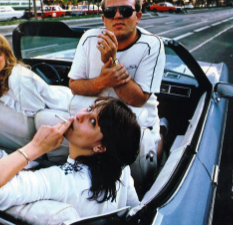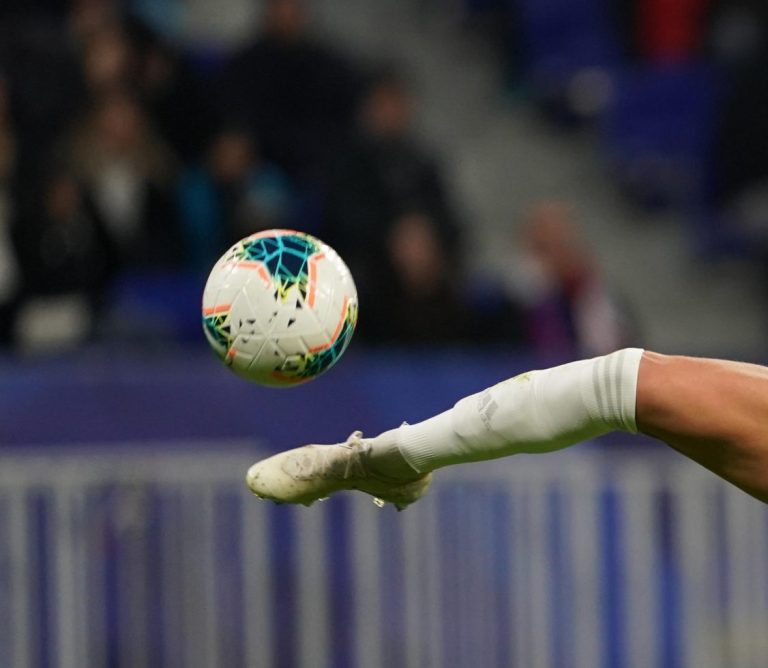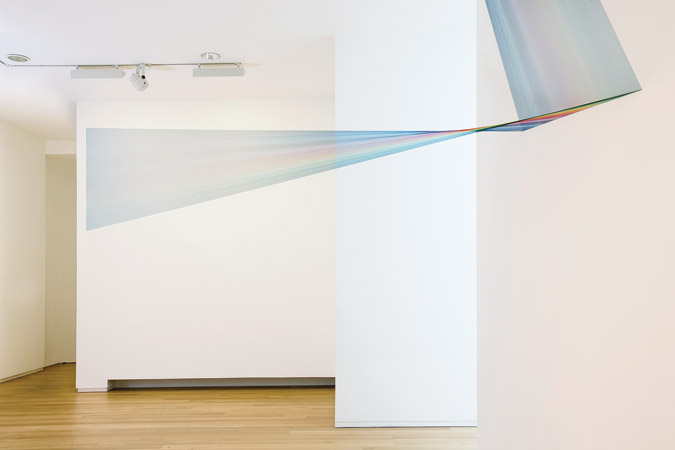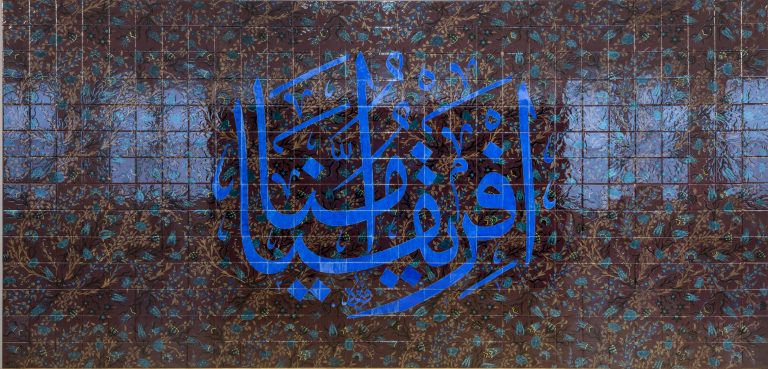Curated by Pádraic E. Moore & The Black Mariah
Spectrum of Activity was a group exhibition on show at the Black Mariah gallery from mid August to mid September of this year. A version of this review was first published in Paper Visual Art’s hard copy Cork Edition, which was released in early September culminating a two week residency at The Guesthouse in Shandon, in Cork City.*
The Black Mariah gallery having moved from its temporary lodgings at the ESB Substation, is now located on the 2nd floor of the Triskel Arts Center in Cork City. Next door is the impressively re-furbished Christchurch which operates now as a cinema and music venue.
Spectrum of Activity originated from an open submission call out made by Pádraic E. Moore on the invitation of The Black Mariah; the closing date for which was the 4th of August, eleven days before the opening.
Johannes Itten’s work in colour theory is the theme for the artists’ responses. Itten, a founding figure of the Bauhaus, spent his career analysing colour from theoretical and spiritual standpoints, the latter position contributing to him being dismissed as a mystic. The works in this show respond, fittingly, in pseudo-scientific, literal and abstract ways. Tim Acheson and Meadhbh O’Connor’s fit into the former, both making sculptural works that split white light into its constituent colours, using lens and a prism. O’Connor’s sculptural installation comprises a series of test-tube holders arranged in a circle on the gallery floor, with some small plants sprouting from within them, and a series of clear, rubber tubes curling out. Suspended over this arrangement is a length of prism through which a white light is refracted into its constituent spectrum. This small rainbow of colour falls across the network of tubes that crisscross the center of the arrangement.
On a table made from two small white plinths and a plane of plywood sits Acheson’s projection, a print from Adam Fearon, and Andrew Manson’s strange Items to control colour tints for colour field theory. Like the title, Manson’s is a knowingly clumsy piece, comprised of a blocky swatch of colours painted onto small sheets of plywood, and held together with a steel loop. They splay out of the small timber case that is designed to hold them.
On the wall to the right of this collection of objects is Blaine O’Donnell’s All things are Pigment. It is here that it struck me that the loft window lights throughout the space have been covered over, allowing no, or at least very little natural light into the space. This painting shows four figures emerging from a small vitrine, running toward a sea of colour, at the center of which sits a large fragmented circular spectrum sun. All of the ‘refracted light’ that diffuses around the picture is labelled according to its colour title, i.e. ochre, lemon, yellow, umber, etc. It is twee and naff and knowingly so, but it does suggest certain colours as representative of style, or belonging to a certain era. An idea that is extended with some subtlety in Vicky Smith’s Berliners in car. In the context of this exhibition, Smith’s piece stands out and hauls the show into an entirely different direction. Her photographic print (which is fitted directly onto the gallery wall) is of another photograph that featured in a National Geographic magazine in 1982. The saturation of tone and colour of this re-representation places it into a specific era. It asks cultural questions of colour, what colour, when, for who and for what use?
To one side of this is Eoin Mac Lochlainn’s On reflections no. 4, and to the other, in the corner of the room, on the ground sit a playful collection of small, coloured, plastic moulds from John Gayer, and four glass tanks from Niamh Clarke. These tanks sit on foam tubing and each have submersible pumps in them and what looks like cocktail glasses filled with some coloured liquids. These glasses float about in the water bumping into the walls of the tanks making small, random, pinging noises.
Along the right hand side, proud of the gallery are two bare plywood walls which hold a series of re-worked posters from Donough McNamara and two more spectrum wheels in water colour from Niall Moore. Below these watercolours sits The aesthetics of dejection, a collage on vinyl sleeve. The plywood walls hide some electrical wires and some speakers from which emanates the looping and hypnotic soundtrack of Adham Faramawy’s Violet likes honey, which is a heavily doctored video piece showing scenes comprised of lurid swirls of colour which inhibit its full apprehension. The suggested narrative of the piece becomes subsumed, or collapses into the manipulation of the medium that is relaying it. This video piece is shown on a very large flat screen television that sits on the ground and leans at a slight angle against the gallery wall. The sound from this dominates the space, and instead of being a cohesive glue between the other pieces in the show, it becomes hegemonically suggestive.
The modes of visual presentation in the show suit the disparity of its content, moving as it does from the scientific, to retro twee, to child-like, to minimalist, aligning itself with none of these aesthetics fully. The works on paper in the show, perhaps by virtue of the temperature and humidity of the room, all curl up away from the walls that they are fitted upon, which creates distracting shadows behind and around them. The negation of the natural white light from this show seems counter intuitive and the interaction with the architecture of the room is at times very limp and at other times clever and attentive, no more so than with Miranda Blennerhasset’s Wall Paintings. These were made along the top stairway and in the foyer into the gallery. They are blocky, diagonal patterns with pastel colours, outlined in gold. These artworks navigate around the corners, the curves in the walls, the fuse box, and around the light switches, elucidating the space and fittings in a gentle manner.
Adrian Duncan works in Dublin.
*Thanks to Stephen McGlynn.
Other works made during this residency in The Guesthouse were shown by Barbara Knezevic, Marta Fernández Calvo and Adrian Duncan.




